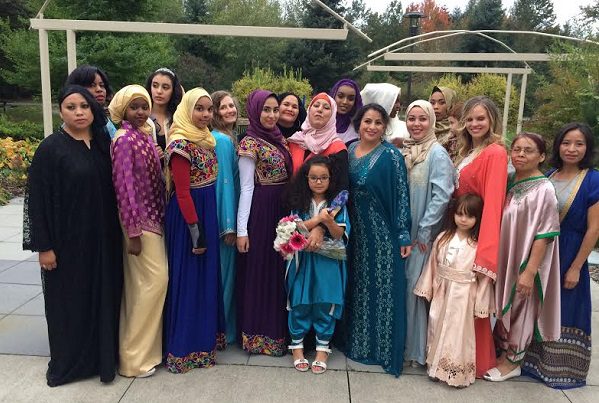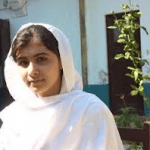 |
|
Nothing to see?
|
Much has been said about the burqa in different parts of the world in the past week. On June 22, 2009, French President Nicholas Sarkozy expressed his support for dozens of French legislators expressing their support for a complete ban on the burqa saying:” the burqa is not a religious sign; it’s a sign of subservience, a sign of debasement” and that “it would not be welcome in the French Republic.”. Mere days before Sarkozy’s pronouncement, in a courtroom across the Atlantic, the Michigan Supreme Court decided in favor of amending a court rule that would allow judges to dictate courtroom attire and legally require women wearing the niqab to remove the covering while testifying in court. At the same time, viewers across the world watched Iranian women in various forms of veiling from handkerchief styled hijabs to fully encompassing black chadors erupt in protests on the streets of Tehran.
The issue of covering and uncovering, when the state can enforce it or ban it, what it curbs and what it promotes; the consequent images as vendors of barbarism or liberation is thus become a corollary to politics in these otherwise disparate portions of the globe. Few issues illustrate the cumbersome weight of global politics brought into inordinate and often disjunctive proximity as the burqa. In media efforts to come up with sound byte theses there is little if no effort to investigate the peculiarities of these three iterations of burqa as emblems of local politics within the particular countries. The emphasis instead, is on deconstructing the burqa itself as a symbol, to investigate its veracity as a religious symbol or a mark of subjugation state-sponsored or mandated by religious orthodoxy. Little or no effort thus, is expended in unraveling the dimensions of the burqa as a secondary symbol that bears within it complex dynamics that have little to do with commitments to the emancipation of women and much to do with using women’s bodies as a illustrative landscapes for varying political agendas.
Take first the French case, the “burqa blinds” argued many French commentators digging their feet against the burqa. The statements aren’t surprising, France has already banned the “hijab” and headscarf in public schools and refused citizenship to an otherwise eligible woman simply because she chose to wear the burqa. The burqa ban instituted in 2004 has forbidden French Muslim schoolgirls from attending school. Yet to interpret French disdain toward the burqa as a stand alone icon of its commitment toward women’s liberation would be grasping a mere fraction of the hijab saga as it unfolds in France. President Sarkozy conveniently posturing as a advocate for women’s equality when it comes to the burqa. French feminists have long decried the President’s failure to support initiatives that help women, including the establishment of a Ministry of Women’s Affairs and refusing to meet with groups helping women who are victims of sex-trafficking rings.
The feminist façade is not the only hole in the French case against the burqa; as is well known, France’s nearly 10 million Muslims have trouble getting jobs and have an unemployment rate nearly three times those of Caucasian French. Unemployment, gang warfare and crime is rampant in the banlieus where many of them live. Nearly 60 to 70% of the French prison population is Muslim, a number far higher than the statistic for the Caucasian French population. Yet for all of France’s commitment to liberty and equality Government’s over the years have failed to endorse any form of affirmative action programs that would uplift the community or promise any special assistance to those French Muslim children who seek to escape a life of degeneracy. At the core of the problem remains the idea that to be French one must be racially white and comittedly secular.
Taken in light of this specific context then; the veil becomes not an effort by an individual Muslim woman to become invisible under a black shroud but rather a purposeful effort to make herself politically visible before a system that denies her existence. The burqa in its very capacity to shock and force attention especially in western contexts is an exercise in visibility rather than invisibility; an effort to draw attention to an ignored political existence which the French have repeatedly decried has no claim to recognition. This iteration of the burqa, as an act of political visibility rather than gender invisibility has gone largely ignored in discussions surrounding the issue.
The ruling of the Michigan Supreme Court presents its own contextual complexities. It is worthy of note that the particular petitioner Ginnah Muhammad is an African –American Muslim and not an immigrant. The lawsuit was brought in response to a suit she filed against a rental car company in small claims court. The judge at the small claims court asked her to remove her niqab and she refused to do so. She argued religious necessity and he argued that the jury could not assess the veracity of her testimony without being able to see her face and dismissed the case for her failure to remove the niqab. The Michigan Supreme Court this past week ruled that a judge is allowed to dictate a witness’s court room attire within reason to enable juries to assess their facial expressions.
The limitations of the Michigan case must be noted. In the larger American context, any form of public religious expression is permitted including hijab and niqab. No Muslim American school children are expelled from school because of any attire they choose to wear, in fact Muslims are legally permitted to establish schools that receive state funding provided they meet government standards of instruction. Muslim Americans are largely middle class and live not in ghettoes but rather in suburban communities around the country. The Michigan Supreme Court’s ruling then is a limited one that reflects the unjustified discomfort of a Midwestern court system with a woman that covers her entire face. It is however a classically American civil rights battle which pits difference and individual civil rights against concerns of assessing a witness’s veracity. In terms of political groupings it places the orthodox Muslim woman wearing a niqab in the same side of the fence as gay rights groups, nudists and others all of whom are battling state incursions on individual freedoms of self and religious expression. The American Civil Liberties Union has expressed its dismay over the decision and its likely that an appeal will be mounted.
Finally a word about Iran since the images of chador and burqa clad women forced to cover by a vast state orthodoxy enables and informs impressions of the burqa in the West even when the contextual arguments are vastly different. Images of Iranian women covered and yet protesting are again illustrations of how the misdirected the debate over veiling is. It is worthy of note thus that both Ahmedinejad and Moussavi support the covering of women. The promise of change for Iranians is not a promise of freedom from the state enforced chador.
The issue of covering as a political denominator is here too ensconced in its complexities; women’s bodies, both covered and uncovered thus are part of a political mosaic that goes beyond them; the only common theme being their perpetual use and misuse as sites of political spectacle. To search and artificially impose a singular thesis on what the burqa represents either to Muslim women, or the political schema of the country where these issues evolve is thus to eviscerate its emergence as a varied albeit ironic symbol of both political resistance and repression. Enabling a discussion that goes beyond only the visible thus is to take a step in understanding the varied ways in which the contemporary world makes women both visible and invisible.
(Photo: Charles Roffey)
Rafia Zakaria is associate editor of altmuslim.com











